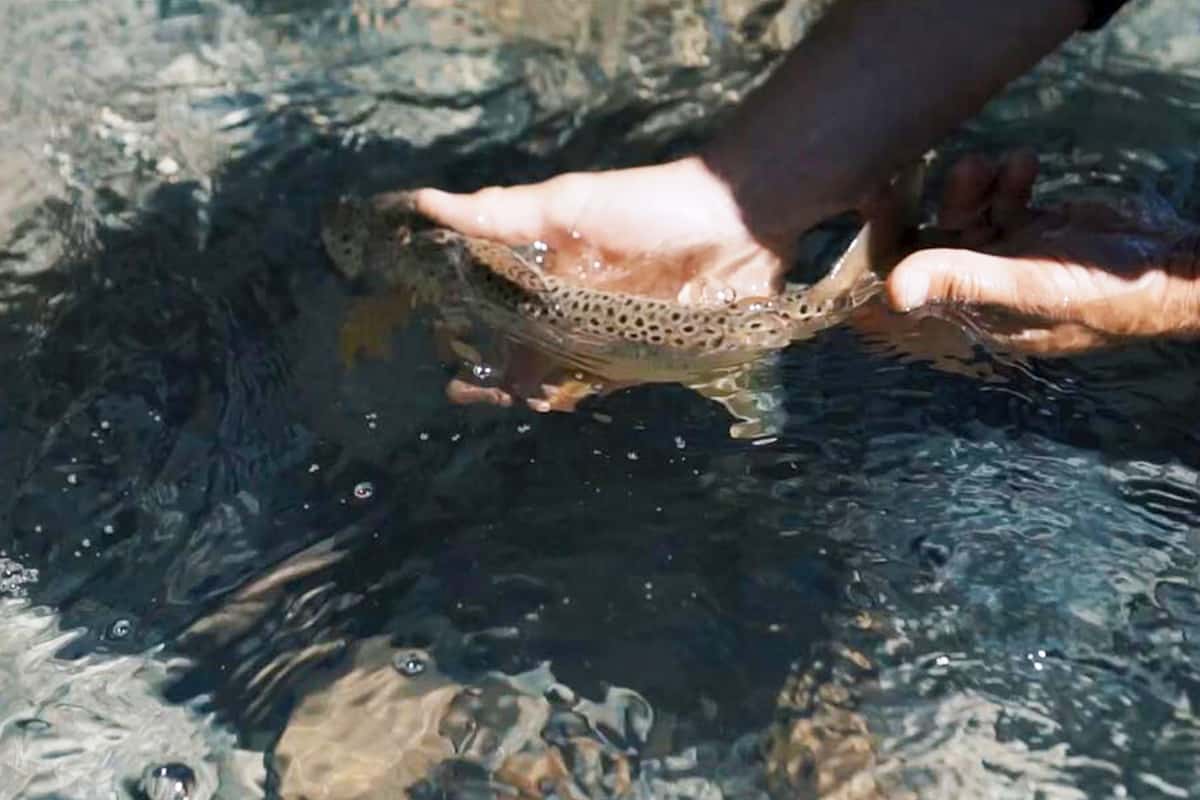How to minimize harm to the fish while fishing
Recreational fishermen are focused on conservation and respecting the species they catch, in order to cause as little harm as possible when returning them to the rivers and lakes. However, certain techniques, tricks and recommendations are required to achieve sustainable fishing.
Here we offer some tips to minimize harm to the fish while fishing:
- When catching a fish, you must reel it in until you can pick it up with your hand. It is important to keep the fish in the water as long as possible until you are close enough to hold it. We suggest increasing the reel drag but try to avoid the fish from struggling or jumping to exhaustion.
Note: Ideally hold the fish as little as possible, but if you must touch it, make sure your hands are wet, or the fish’s scales and protective layer could stick to your hands, making the fish less equipped to survive in the water.
- When holding the fish in your hands around their pectoral fins (the fins just below their gills), it is important to hold it firmly to avoid it from flopping and shaking free. It will be harder for the fish to escape from this position.
Note: Avoid holding the fish by the jaw, or it will flop in the air and try to return to the water, which will make it hard to grab it again. Also consider placing the fish in a rubber fishing net because it not only retains a little bit of water, it prevents damage to our catch, and avoids problems with the hooks. It is less probable that the fish will flop around if it can lie in a little bit of water. It may be easier to take out the hook, if the fish is relatively calm and you do not have to hold it in the air.
- Catch and release the fish quickly because it is less probable that the fish will survive after release if you reel it in slowly and it struggles until exhaustion. However, if you catch and release a fish without subjecting it to excessive stress, it can recover in 24 hours, to the point of not suffering any significant effects from the experience.
- Use barbless hooks, one option is flattening the barb on the hook to cause less damage to the fish’s mouth and remove it easily and quickly. There are studies that show that certain types of fish, like the striped bass, caught with a circular hook or barbless hook are 11 times more likely to survive than those caught with J hooks.
Note: According to Sernapesca regulations in Chile, it is absolutely forbidden to use triple (three-point) hooks due to the probability that these hooks can get embedded in a vein and kill the fish.
- If the hook is caught in the fish’s mouth, try sliding it and removing it directly from the lip. It is important to avoid tearing the lip when pulling the hook out.
Note: Take your time when removing the hook, because it is important to not cause deeper lacerations to the fish and cause it to bleed in the water.
- Use fishing tools that offer you a more precise hold on the hook and eliminate the risk of being bitten by the fish, like Kelly forceps or needle nose pliers. If the fish does not have sharp teeth and the hook is not deeply embedded in the skin, you can remove the hook with your fingers.
Note: Use the forceps to bend the hook and remove it from the point of entry. If you straighten the hook, it may be easier to pull it out without harming the fish. You can also use pliers to flatten the barb on your hook. This will make it easier to unhook.
- Click Click Picture time! The fish must be in the water when taking the picture. If you do take it out of the water, it must be kept as close as possible and submerged between pictures so that it can breathe. The key is to do it fast and count “1,2,3” … click.
Once we have decided to catch and release, we put the fish back in the water… but how?
The recommendation is to release the fish where you caught it or in a safe area where it can quickly get its bearings back on its own. It is also important to give it time to swim away before casting your line again.
Never throw the fish back in the water, but try to slide it in so it does not die from shock or impact. Try to always hold the fish firmly with two hands and carry it as close as possible to the edge of the water before letting it go.
Each country, city and region has its own fishing regulations. Therefore, we recommend that you research ahead of time and respect the limits established by the Fishing Department in each country to avoid destabilizing the ecosystem and ruining the area for future fishermen.
Reference
Fly Dreamers (2019) Consejos para devolver el pez correctamente. Taken from https://www.flydreamers.com/es/articulos/10-consejos-para-devolver-un-pez-correctamente-a1593
How Stuff Works (2018) Tips for removing fish hook. Taken from https://adventure.howstuffworks.com/outdoor-activities/fishing/fish-conservation/responsible-fishing/5-tips-for-removing-fish-hooks.htm
Wiki How (2019) Quitarle el anzuelo a un pez. Taken from https://es.wikihow.com/quitarle-el-anzuelo-a-un-pez

